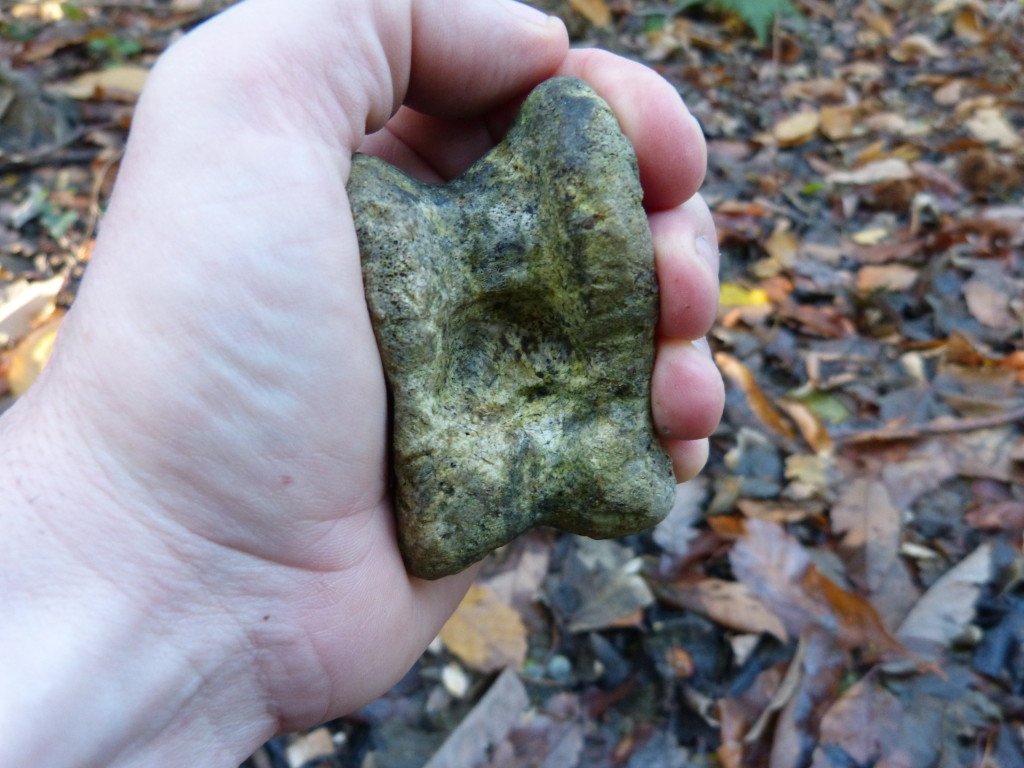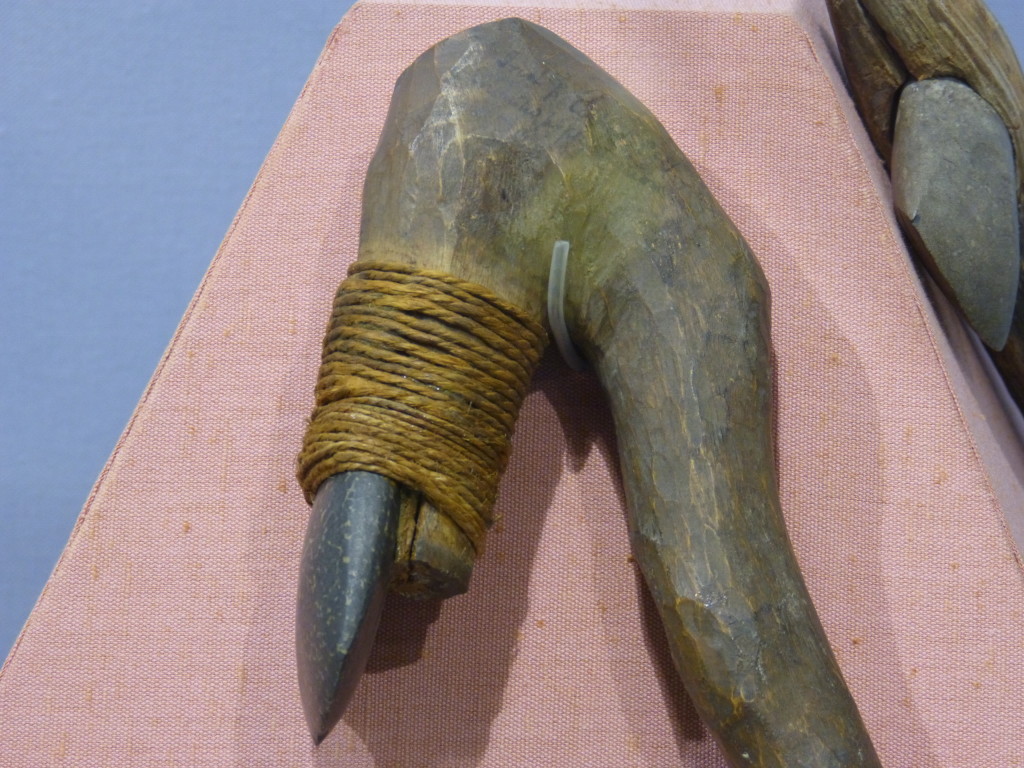By Sean Fagan

Can something as mundane as a bone handhold be an imaginative portal into the past? (Photo: Sean Fagan).
.
A Brief Homage to the First People of Ireland
.
Something as seemingly innocuous as a bone handhold can form an imaginative link to the first hunting & gathering people that nomadically roamed throughout a landscape of dense, verdant wilderness that was once Ireland.
I imagine joy on the face of a prehistoric person when he or she finds a bone handhold on a woodland floor.
And I imagine that person carrying that bone on their nomadic travels - and using that handhold to create many friction fires…
…fire to keep clan members warm, to cook food, to provide a haven of illumination in a vast wilderness shrouded in the darkness of night.
But there is a problem with my imaginative forays into Ireland’s prehistoric past.
It might not be true.
The hunting and gathering people of Ireland (the Mesolithic people) spanned an almost 4,000 year period of occupation in Ireland (from about 9,500 years ago to 6,000 years ago).
They lived and breathed bushcraft on an hourly basis – for many generations – for almost 4 millennia.
The archaeological evidence strongly supports that friction fire was used by prehistoric people in many locations of mainland Europe.
But no such evidence of the friction fire, however probable, has been found in Ireland.
This is mostly because prehistoric artifacts made of wood, natural cordage and even bone usually decompose into oblivion, leaving no trace of its existence in the archaeological record.
In all probability, the Mesolithic people in Ireland most likely used multiple means of lighting fire – but we don’t know which ones.
.
But here is my somewhat oblique point:
When you practise bushcraft enough, you may, without even thinking about it – imaginatively fall into the mind-set of prehistoric people.
It’s natural to feel an affinity for an ancient people that we as, as modern bushcrafters, are often trying to emulate.
We become more aware and appreciative of their formidable skill set as we try to stretch out own buschraft skills.
And this is my essential point - sometimes bushcraft is a physical and imaginative journey into the heart of wild places.
If you haven’t already, it’s my hope that you experience this enlarging aspect of bushcraft on your trail-ways into nature.
For myself - it’s an enriching, endlessly fascinating and precious part of bushcraft.
.

A beautiful and very functional stone-head adze. This ancient tool is between 4,800-5,600 years old. National Museum of Ireland, Archaeology (Photo: Sean Fagan).
.
Acquire, with due diligence and passion – the many core skills of bushcraft.
But remember – there may be times when you will need to refuel your passion for bushcraft.
One such way is to form an imaginative bond with our first ancestors – whom, against incredible odds, managed to live closely with nature – in all her dizzying complexity and vagaries.
.
Back to my bone handhold.
I look forward to using it,
And on occasion, pausing - and letting my mind wander back to the first people of Ireland...
.
.
“The more civilised man becomes, the more he needs and craves a great background of forest wildness, to which he must return like a contrite prodigal from the husks of an artificial life”.
Ellen Burns Sherman
.
.
Related articles on this website:
- 3 Great Uses of Maps: Prehistoric Remains, Folklore & Old Place-Names
- Bushcraft & Art
- Nature: A Bushcraft Perspective

Recent Comments